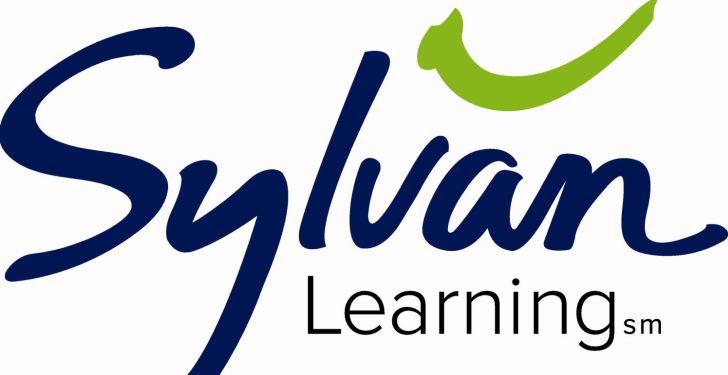Supplemental Educational Opportunity Grant – Most undergraduate students with financial aid searching for a grant may have heard the Federal Pell Grant. However, this is not the only grant that’s coming from our government. The Federal Supplemental Educational Opportunity Grant (FSEOG) can be your option too, especially because you don’t have to pay it back after graduation. Today we will show you what can you do to determine whether you are eligible for the supplemental educational opportunity grant.
The FSEOG grant is a joint program from the federal government and the school. The rule is that the school should financially participate in the program’s funding. Besides, the institution should cover one dollar for every three dollars covered by the federal money.
Note that not all schools participate in this program, so ask around your school / college / university office for clear information about the FSEOG program. Another difference between FSEOG VS Pell grant is the continuity of the program for the respective school. The funding for FSEOG grant may be available for this year. But there is no guarantee that the next year the school will still provide the financial assistance program.
Supplemental Educational Opportunity Grant Eligibility
Just like the Federal Pell Grant, the FSEOG is available for undergraduate students with unmet financial need. To determine your eligibility for the FSEOG, you need to complete the Free Application for Federal Student Aid (FAFSA) online. The government then will determine whether you are eligible for this grant or not. You can submit the application starting from January 1st each year. Completing the FAFSA is your door to get any other Federal grant.
How much money will I get from Federal Supplemental Educational Opportunity Grant?
Depending on the funding, your EFC, general financial need, and several other factors, most students will receive between $100 and $4,000. There are three possible ways that the grant money is available, depending on each college’s policy. Your school or college may credit your account, give you a check, or combine these two methods. For each term, your college or university will provide the payment.
Each year, participating schools receive a designated allocation of Federal Supplemental Educational Opportunity Grant (FSEOG) funds from the U.S. Department of Education’s Office of Federal Student Aid. These funds serve as a crucial resource for financially disadvantaged students seeking assistance to cover the costs of higher education. Unlike the Federal Pell Grant Program, which offers funds to all eligible students, the distribution of FSEOG funds follows a different mechanism.
Once a school has distributed its entire allocation of FSEOG funds to eligible students, no further awards can be made for that academic year. This finite pool of funds underscores the importance of timely application for federal student aid. It is imperative for students to initiate the application process as early as possible to maximize their chances of securing FSEOG assistance.
Each educational institution establishes its own deadlines for disbursing campus-based funds like the FSEOG. Prospective applicants should diligently research and adhere to these deadlines, which can typically be found on the school’s official website or by consulting the financial aid office. By staying informed and submitting their applications promptly, students can optimize their access to vital financial resources for their educational pursuits.
How Will You Receive the Fund?
Once determined eligible, your school will distribute scholarship funds through various methods. For example, crediting them directly to your student account or issuing payments directly to you. Even they can utilize a combination of both approaches.
The disbursement of funds by your school is mandated to occur at least once per academic term. It can be per semester, trimester, or quarter system. For institutions operating outside the traditional framework of semesters, trimesters, or quarters, they will distribute the fund at least twice within the academic year to ensure timely financial support for eligible students.
How to Maintain the Grant
To retain the grant, you need to stay enrolled as an undergraduate student. Additionally, you must not have already attained a bachelor’s degree. Your ongoing eligibility for federal student aid, which includes the Federal Supplemental Educational Opportunity Grant (FSEOG), relies on the completion of the Free Application for Federal Student Aid (FAFSA) form annually.
Each year, your institution will assess your eligibility for the FSEOG based on the information provided in the FAFSA and other pertinent factors specific to your college. Keeping up with these requirements ensures your continued access to the grant throughout your undergraduate studies.
Important Notes
- Usually Federal Pell Grant recipients are also eligible for the Federal Supplemental Educational Opportunity Grant. The FSEOG grant is available for students who really are the neediest for any financial assistance. Usually the FSEOG grant is available for Pell Grants recipients with the lowest expected family contributions (EFCs)
- It is best to submit the FAFSA application as soon as possible. The number of federal grants available each year is limited. Meanwhile, the Pell Grant and FSEOG grant are two of the most sought after in United States.
- Submitting the FAFSA application as soon as possible also increases your chance to receive maximum allocation money for the Federal Supplemental Educational Opportunity Grant.
- Along with Pell Grant, the Federal Supplemental Educational Opportunity Grant is the door for other types of grants coming from various institutions.
FSEOG Contact Information
You can find complete information about this financial assistance by visiting the links available on our reference below. If you need further assistance about completing your FAFSA, you can contact the Federal Student Aid Information Center (FSAIC)
For general information about Federal student aid programs, assistance in completing the FAFSA, and information about FAFSA on the Web, call the Federal Student Aid Information Center (FSAIC) at 1-800-433-3243.
Summary
The Federal Supplemental Educational Opportunity Grant (FSEOG) provides financial assistance to undergraduate students with unmet financial needs. While similar to the Federal Pell Grant, it offers funds ranging from $100 to $4,000, subject to individual college policies. To qualify, students must complete the Free Application for Federal Student Aid (FAFSA) annually, with funds disbursed by schools at least once per academic term.
Eligibility hinges on maintaining undergraduate enrollment and not possessing a bachelor’s degree. Students are encouraged to apply early due to limited funds. Once approved, funds are distributed directly to students or credited to their accounts. Maintaining eligibility ensures continued access to the grant throughout undergraduate studies. For more information, students can contact the Federal Student Aid Information Center.
References:
- Federal Supplemental Educational Opportunity Grant (FSEOG) Program – https://www2.ed.gov/about/overview/budget/budget21/justifications/p-sfa.pdf
- Federal Supplemental Educational Opportunity Grants – https://www.benefits.gov/benefit/595
- Images: snead.edu, blog.risla.com
- (https://studentaid.gov/understand-aid/types/grants/fseog)



